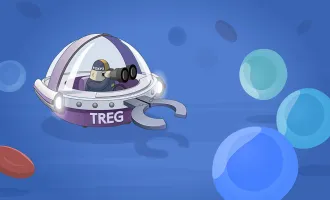
The Future of Genetics
A couple sits close, intently studying a dossier. On the dossier is a list starting with Embryo #1.
According to the description, Embryo #1 is female, has a high risk of Type II Diabetes, will have blue eyes and blond hair, and has a 20% chance of being in the 90th percentile for math ability.
Alternatively, Embryo #100 is male, will have blue eyes and dark hair, has a 60% chance of being in the top 10% for musical ability, and is at a high risk for depression.
Between Embryo #1 and #100 lie similarly detailed descriptions.
While this may sound like science fiction, according to Hank Greely, Dean F. and Kate Edelman Johnson Professor of Law at Stanford University, this scenario is the soon-to-be future of human reproduction.
“I predict in [my] book [“The End of Sex and the Future of Human Reproduction”] that in 20 to 40 years the majority of babies born to people with good health coverage anywhere in the world will not be conceived in a bed or in the back of a car or under a ‘keep off grass’ sign, but will be conceived in a lab so that parents can then do whole genome sequencing and pick the embryo that they want,” Greely said during his Gladstone GO Graduate Student Organization sponsored bioethics seminar on April 14.
Greely went on to share several stories about advances in human reproduction that will make this future he envisions possible, starting with preimplantation genetic diagnosis (PGD).
“A three day embryo is like eight grapes inside a water balloon that’s filled with jello,” Greely explained. “The grapes really aren’t attached to each other, so what you [do is] make a little hole in the water balloon--the membrane holding the embryo together — and suck out one of those cells. And the other seven cells [do] fine, they [do] not fail at any higher rate than embryos regularly fail, and you take that cell and do genetic testing on it.”
According to Greely, PGD has been clinically available for 25 years, but recently scientists have been using five- or six-day-old embryos from which they can take five, 10, or even 15 cells, thus allowing for more confidence in the genetic testing results.
This procedure, however, is currently limited by the expense of sequencing, the short time frame between taking cells from the embryo for genetic testing and implanting the embryo, and our understanding of genetics.
As sequencing becomes cheaper and allows our knowledge of genetics to grow, Greely predicts that PGD will advance to what he calls enhanced PGD, in which cells taken from embryos will have their entire genome sequenced.
Another huge limitation to PGD is that before you can run genetic tests you first must harvest eggs from the female.
“Normally women ripen one or at most two eggs a month,” Greely said. “If you’re going to go in [for] this invasive procedure you want as many ripe eggs as possible. Very expensive hormones [are used] in order to convince more eggs to ripen than normal. This causes cramping, bloating, mood swings, unpleasantness as well as the fact that [the woman] has to give herself a shot every day for 30 days in a row which people, understandingly, find a little bit disconcerting.”
Furthermore, although a small percentage, some women who go through egg harvesting end up hospitalized or may even die.
“Nobody goes through IVF [in vitro fertilization] just for the heck of it,” Greely said. “They do it because they have to.”
Importantly, Greely also stresses that this unpleasantness and risk all falls on the female.
So what can we do to move away from current methods of egg retrieval? Greely believes the answer is induced pluripotent stem cells (iPSCs).
iPSCs are generated by reprogramming adult cells in a way which induces a loss of their defined cellular identity. In this state the cell now has the the potential to differentiate into any cell type, whether it be an epithelial cell, a cardiomyocyte, or an oocyte.
Greely thus envisions a world in which an individual would give a skin biopsy that would be reprogrammed to become iPSCs which would then be used to make oocyte precursors and finally an oocyte that could be fertilized.
This method, known as in vitro gametogenesis (IVG), could also be used on skin biopsies from males to generate oocytes or skin biopsies from females to generate sperm, thus making it possible for same sex couples to have children who are biologically related to both parents.
Additionally, instead of harvesting only a few eggs, IVG could potentially generate hundreds of eggs non-invasively.
Taking it a step further, whole genome sequencing (WGS) could be performed on all fertilized eggs to generate genetic profiles of each embryo. Parents could know whether the embryo is at high risk for early onset disease or other diseases and medical conditions. They could also learn about the cosmetic make up, behaviors, and sex, and use all this information to help them choose the embryo they want implanted.
One important caveat to this scenario, however, is that rarely do traits adhere to simple Mendelian genetics with one gene coding for one trait.
“It’s all going to be really complicated,” Greely stated. “Probably involving hundreds or thousands of different genetic loci and with a big dollop of environment and chance.”
Another issue is how parents will parse through all this information.
“Even if you’re only looking at 20 different things of significance how do you weigh 50% higher risk of Type II Diabetes versus 50% lower risk of schizophrenia versus 50% chance of being in the top 10% for music ability versus [being] very, very tall?” Greely asks. “It’s going to be a real hard decision.”
Thus, an important aspect of this future Greely envisions will be educating parents to help them make informed decisions that they will ultimately feel comfortable with.
Despite this being a bioethics seminar, Greely only discussed a few ethical quandaries.
For instance, if you can take anyone's cells and make them into eggs and sperm, then anyone can be a genetic parent. A 50-year-old woman could become a mother, but an eight-month old baby or a woman who died and whose cells were frozen could both also become genetic parents.
While Greely’s point seemed to be that this would change family structures, I think the real issue at the crux of this is legal regulation, which Greely didn’t touch too much on in his talk.
One of the most challenging moral dilemmas associated with this future of human reproduction was, surprisingly, not brought up until the question was posed by an audience member.
As technology like PGD becomes more available and more powerful, will we lose populations of people?
For example, if you knew that an embryo would give rise to a child who was deaf, autistic, or achondroplastic would you chose against that embryo? And if you and others choose against that embryo how will that impact our society?
For one, it will decrease the number of individuals who make up that community thus decreasing research, social, and political support for this community.
Additionally, if parents tend to select against these traits it may send the message that these traits are “bad” and that individuals who do have these traits are leading lives that aren’t worth living.
But how does one determine what is and isn’t a life worth living?
While society as a whole might label certain traits like those listed above as disabilities, members of these communities don’t all hold that view, instead seeing it as a different way of being. For example, autism is sometimes thought of as neurodiversity.
How will beliefs like this affect a parent’s choice? Will an individual who is deaf select to have a deaf child?
This leads to a whole new set of issues Greely also did not cover.
In the future, will parents be discriminated against for choosing certain traits for their children or for choosing to procreate the old fashion way instead of selecting their child based on traits that society sees as favorable? What new power dynamics will these technologies create?
Greely also failed to talk about issues surrounding availability of this technology.
While he hypothesizes that health care programs will fully pay for IVG and WGS--as in the long run it will ultimately reduce healthcare spending--this coverage isn’t going to happen instantly. In the beginning, these processes will still be expensive and likely only available to those with enough money.
If wealthy individuals are screening their embryos to ensure the healthiest embryo is implanted, what will this mean for populations who can’t afford this service? It seems very possible that the burden of health care expenses could fall entirely on them.
Additionally, this could impact the amount of money funneled into biomedical research whether it be because individuals feel they no longer need to donate to a cause that doesn’t affect them or because research in that field no longer seems like a priority due to a shrinking community of affected individuals.
All of this, however, is dependent on how much information we will actually be able to glean from an embryos genetics alone.
Greely believes that “cheap sequencing changes everything” and while it will definitely lead to advancements, it may not be as comprehensive as Greely predicts.
Despite what I believe to be Greely’s slightly over-optimistic vision, his last point rings true.
“If we understand the issues better in advance we are less likely to screw up.”



